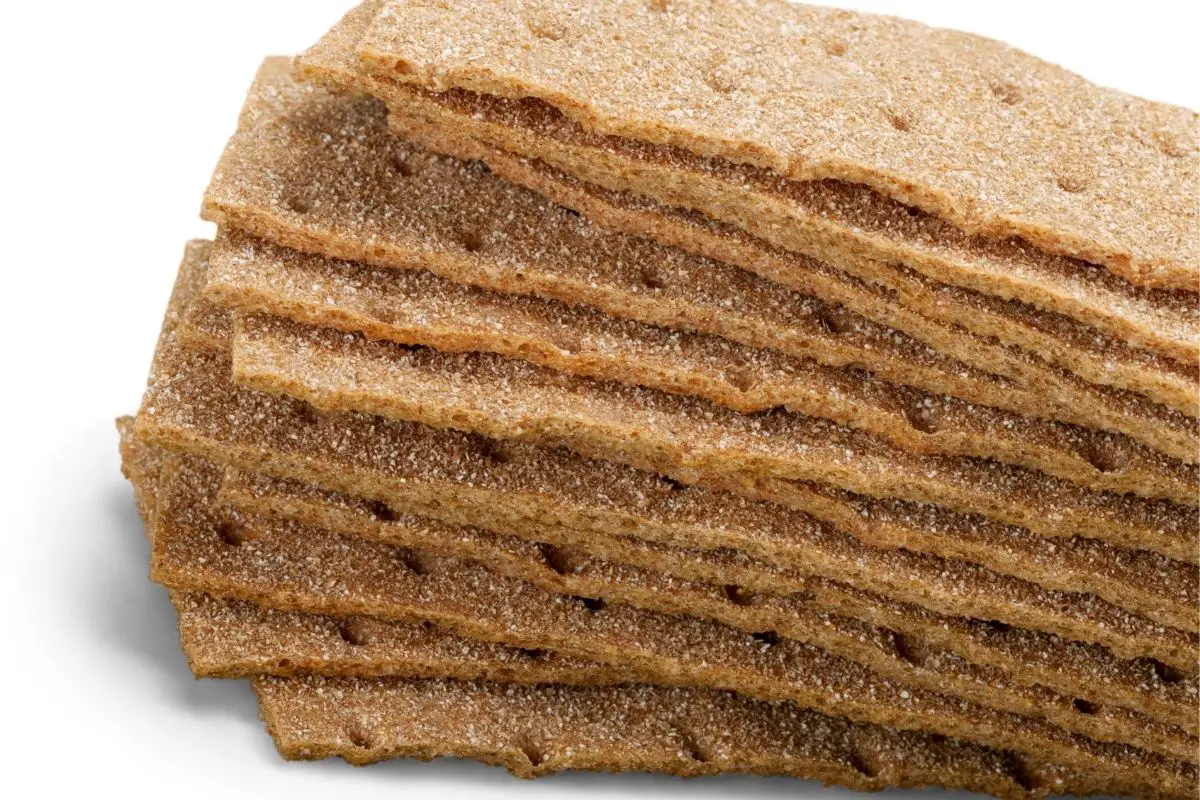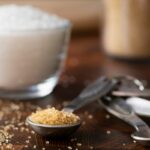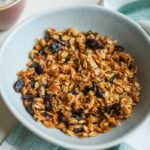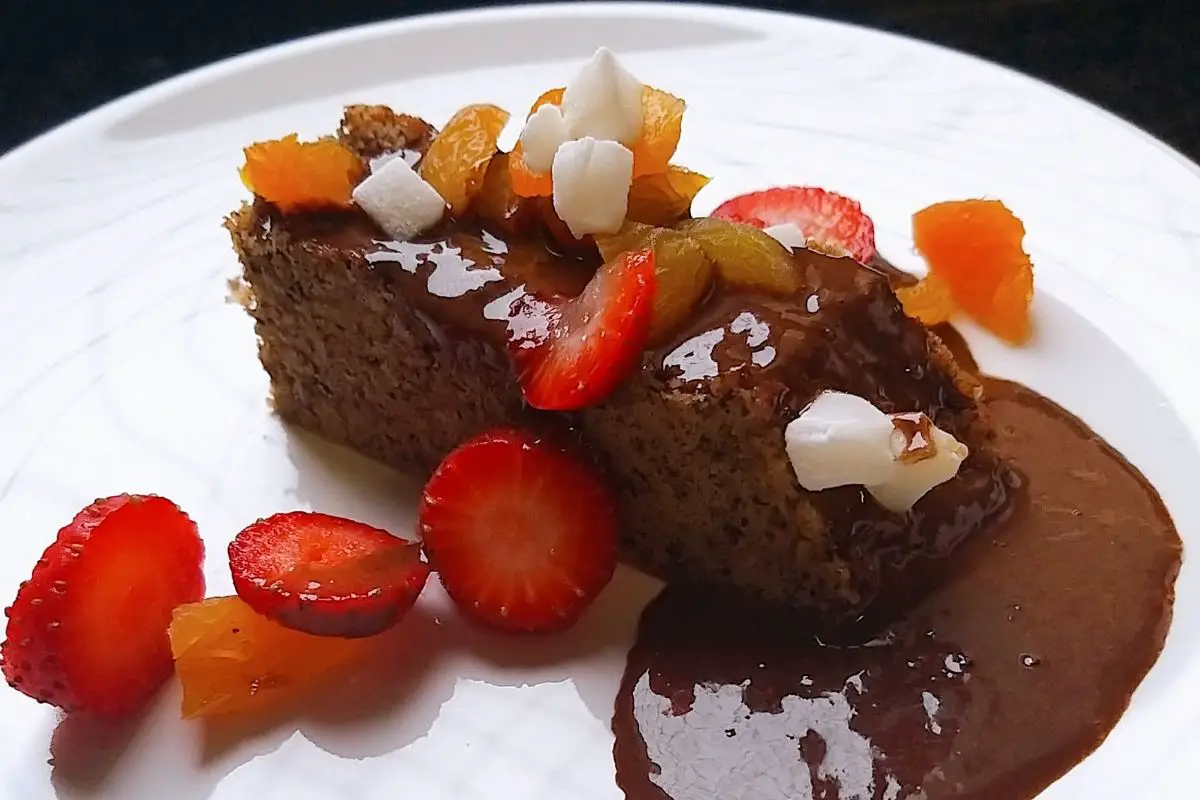As lovers of all things decadent and delicious, it is time to talk about 5 fantastic substitutes for monk fruit sweetener.
While monk fruit sweetener has gained popularity in recent years for its low-calorie and natural properties, there are many other options available that can add a unique flavor and nutritional value to your favorite recipes.
Each of the monk fruit sweetener substitutes we have included in this article has something special to offer and not only do these sweeteners provide an alternative to refined sugar, but they can also add depth and complexity to your dishes.
So whether you’re looking for a natural and unrefined option or just want to switch things up, join us as we explore the world of monk fruit sweetener substitutes and find the perfect one for you!

What Is Monk Fruit Sweetener?
In case you don’t know what monk fruit sweetener is exactly, let’s start with that.
Monk fruit sweetener is a natural sweetener derived from monk fruit, also known as Luo Han Guo, a small, green fruit that grows in Southeast Asia and has been used for centuries in traditional Chinese medicine to treat various health conditions.
How is Monk fruit sweetener created from a Luo Han Guo, you ask? By removing the seeds and skin of the fruit, crushing the pulp, and extracting the juice!
The juice is then processed to create a powder that is up to 200 times sweeter than sugar and the powder can be used as a natural alternative to sugar in baking, cooking, and in beverages like iced tea..
As great as it might sound, monk fruit sweeteners can be difficult to find and can be quite expensive compared to other sweeteners, which is why we’ve compiled this list of 5 great monk fruit sweetener substitutes that you can use in your favorite recipes.
So, let’s see what those are!
1. Stevia
Of course, we couldn’t start this list with anything else but stevia, a natural sweetener that is derived from the leaves of the stevia plant.
Stevia has become increasingly popular in recent years as a low-calorie and natural alternative to sugar. Stevia is up to 300 times sweeter than sugar, so don’t overdo it!
One of the benefits of using stevia as a monk fruit sweetener substitute is that it’s virtually calorie-free and has a low glycemic index.
This means that it won’t cause a spike in blood sugar levels and is a great option for those who are watching their sugar intake.
Moreover, it has a slightly bitter aftertaste, which can make it difficult to use in some recipes.
However, there are now many different types of stevia sweeteners available, including liquid and powdered versions, that have been formulated to minimize the bitter aftertaste.
In terms of usage, stevia can be used in a variety of recipes, including baked goods, hot and cold beverages, and even savory dishes. It pairs well with flavors like chocolate, vanilla, and citrus.
If you’re new to using stevia as a sweetener, start by using a small amount and adjusting to taste as most people find that they need to use more or less depending on their personal preference.
2. Erythritol
The next option is erythritol, a sugar alcohol that is naturally found in fruits and vegetables that has a similar sweetness level to sugar but contains only 6% of the calories!
Erythritol is also non-glycemic, meaning it doesn’t raise blood sugar levels, and just like stevia it is a great option for those who are watching their carbohydrate intake or managing diabetes.
In baking, erythritol can be used as a one-to-one substitute for sugar. It can also be added to beverages, such as coffee or tea, to add sweetness without the added calories.
Yet, one thing to note about erythritol is that it can have a cooling effect when used in large amounts, but this can be easily countered by using it in combination with other sweeteners, such as stevia or xylitol.
3. Xylitol
And here is xylitol, another sugar alcohol that is commonly used as a natural sweetener and has a similar sweetness level to sugar.
Xylitol is great as it contains only 2.4 calories per gram, making it another fantastic low-calorie option. Just like erythritol, it is also non-glycemic, which makes it a great choice for those managing diabetes.
It has a similar taste and texture to sugar so when you are baking and cooking with it, think of it like sugar minus the extra calories!
It can also be used to sweeten beverages, such as tea or coffee but it can be toxic to dogs, so it’s important to keep it away from your furry friends.
4. Allulose
Allulose is a natural sweetener that is found in small quantities in certain fruits, such as figs and raisins.
It has a similar sweetness level to sugar but contains only 0.4 calories per gram, making it our third low-calorie option.
Another non-glycemic option, allulose is ideal for people with diabetes but also for those looking for an ingredient that reacts just like sugar does!
What do we mean by that? That allulose caramelizes and browns just like sugar, making it a great option for creating sweet, crunchy toppings on baked goods.
Another benefit of allulose is that it doesn’t have a strong aftertaste like some other natural sweeteners. This makes it a great option for those who are sensitive to the taste of other sweeteners, such as stevia or monk fruit sweeteners.
5. Coconut Sugar
Coconut sugar is a versatile and natural sweetener that is derived from the sap of coconut palm trees. It has a unique caramel-like flavor that adds a delicious depth to baked goods, such as cookies and cakes.
Moreover, it is perfect for adding a touch of sweetness to your morning coffee or tea, as well as for making decadent caramel sauces and syrups.
As for its benefits, one of the most important ones is that it is unrefined and minimally processed, which means it retains more of its natural nutrients, including iron, zinc, and potassium.
Therefore, it is a great option for those who are looking for a more nutritious alternative to refined sugar but don’t want to skip the sweet stuff!
In terms of taste, coconut sugar has a deep, rich flavor that is often described as caramel or toffee-like. It has a slightly grainy texture, which can add an interesting texture to baked goods.
And the best part? It can be used as a 1:1 substitute for regular sugar in most recipes!
If you’re looking to incorporate coconut sugar into your baking, try using it in recipes like banana bread or chocolate chip cookies.
However, coconut sugar also pairs well with flavors like vanilla, cinnamon, and chocolate, and you can also sprinkle it on top of oatmeal or yogurt for a sweet and crunchy topping, so let your imagination run wild and feel free to experiment with it!
The Bottom Line
Now that you have this list of amazing monk fruit sweetener substitutes, we hope you have discovered some new and exciting options to incorporate into your cooking and baking.
Whether you’re looking for a natural sweetener, a low-calorie alternative, or just something with a unique flavor, there are many different substitutes available to fit your needs.
From stevia to coconut sugar to erythritol, the possibilities are endless, so next time you’re in the kitchen, try experimenting with one of these monk fruit sweetener substitutes and see how it can enhance your favorite recipes!
5 Great Monk Fruit Sweetener Substitutes
Course: Sides4
servings30
minutes40
minutes300
kcalIngredients
Stevia
Erythritol
Xylitol
Allulose
Coconut Sugar
Directions
- Decide on what substitute you need
- Pick a substitute from the list above
- Read what you need to substitute with
- Create the recipe and enjoy
Recipe Video
https://youtu.be/jROu0Mo3A9MVideo can’t be loaded because JavaScript is disabled: Artificial Sweeteners: Monk Fruit, Stevia, Erythritol & Xylitol – Dr. Berg (https://youtu.be/jROu0Mo3A9M)- What Exactly Do Chickpeas Taste Like? Is There A Distinct Flavor? - September 30, 2023
- Top 11 Low Carb Options at Sonic Drive-In for Keto Diet - September 30, 2023
- What Should You Serve Alongside Potato Salad? 8 Incredible Side Dishes - September 30, 2023











